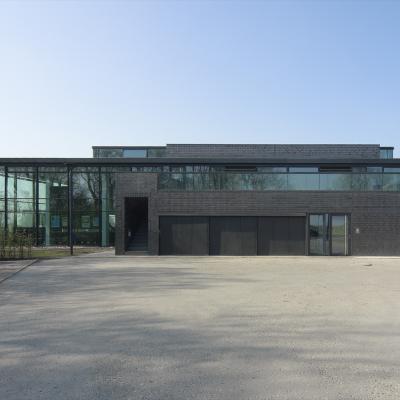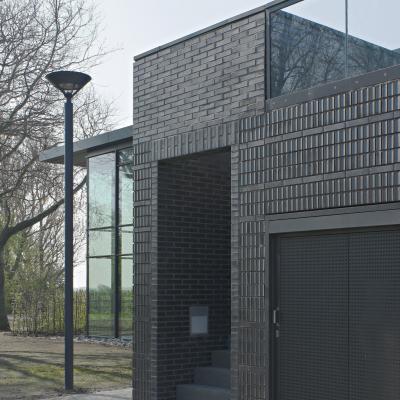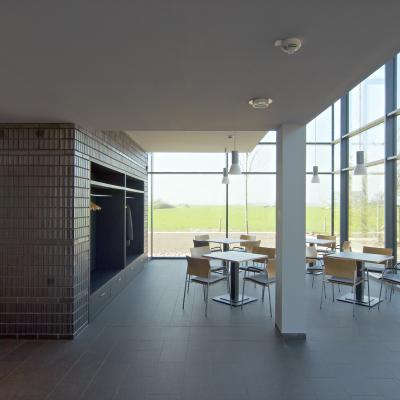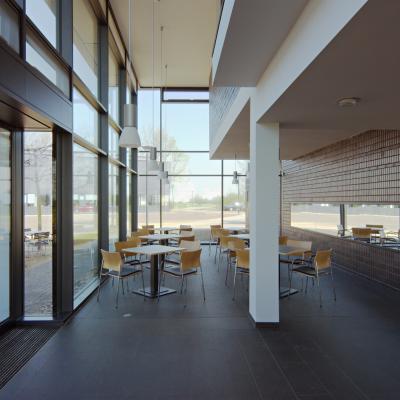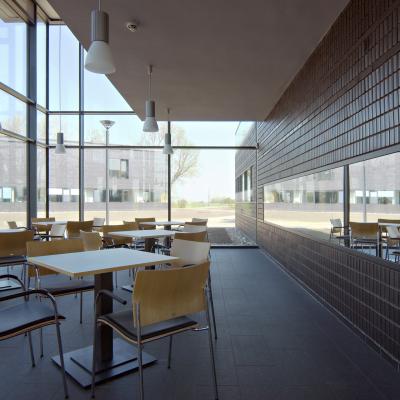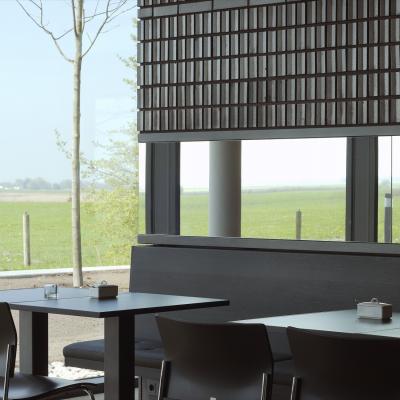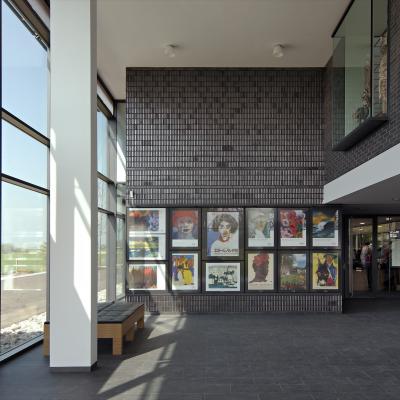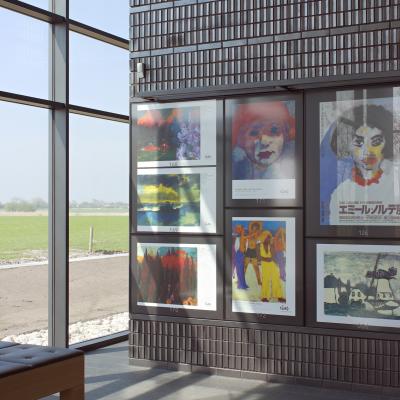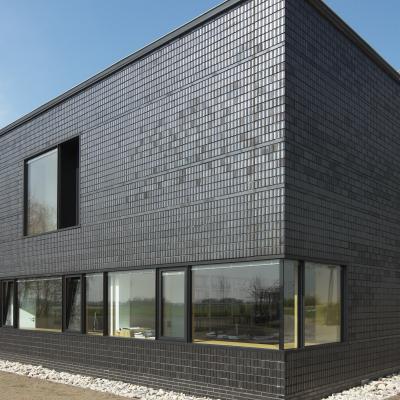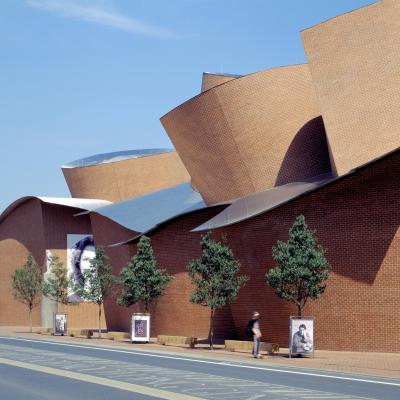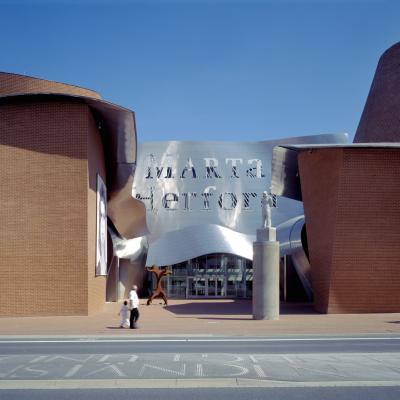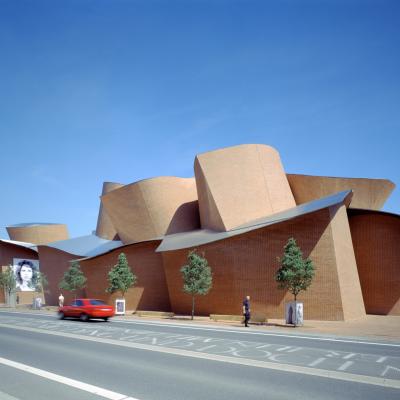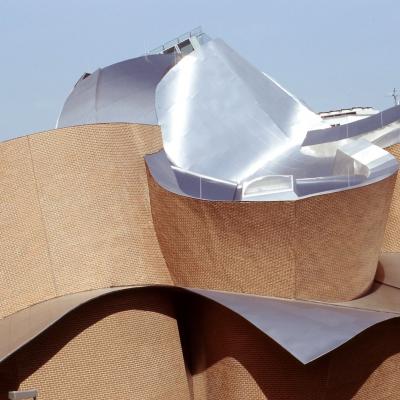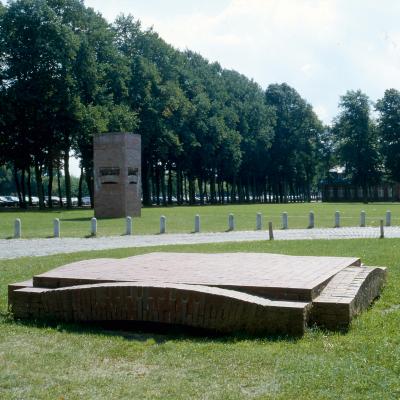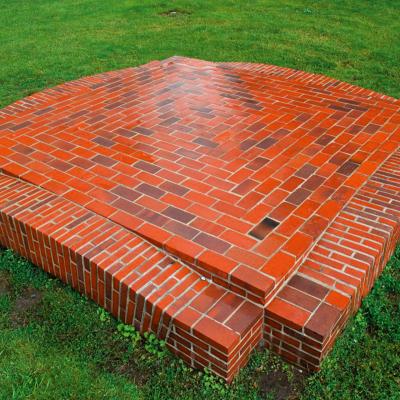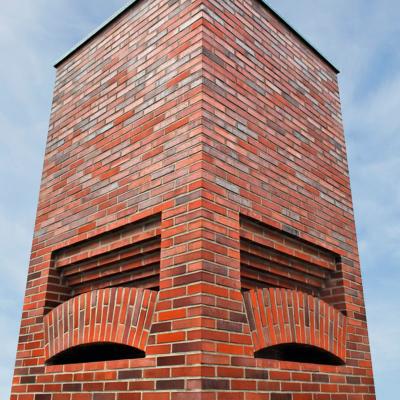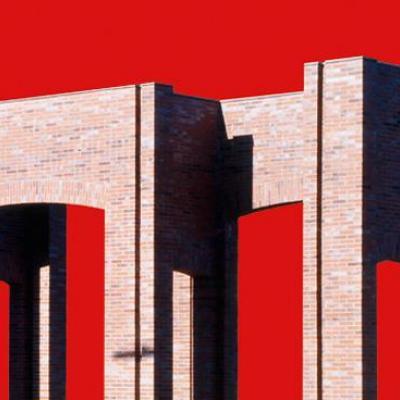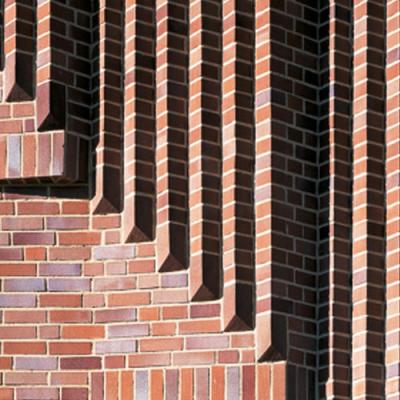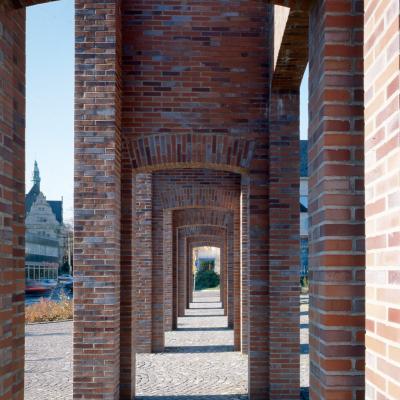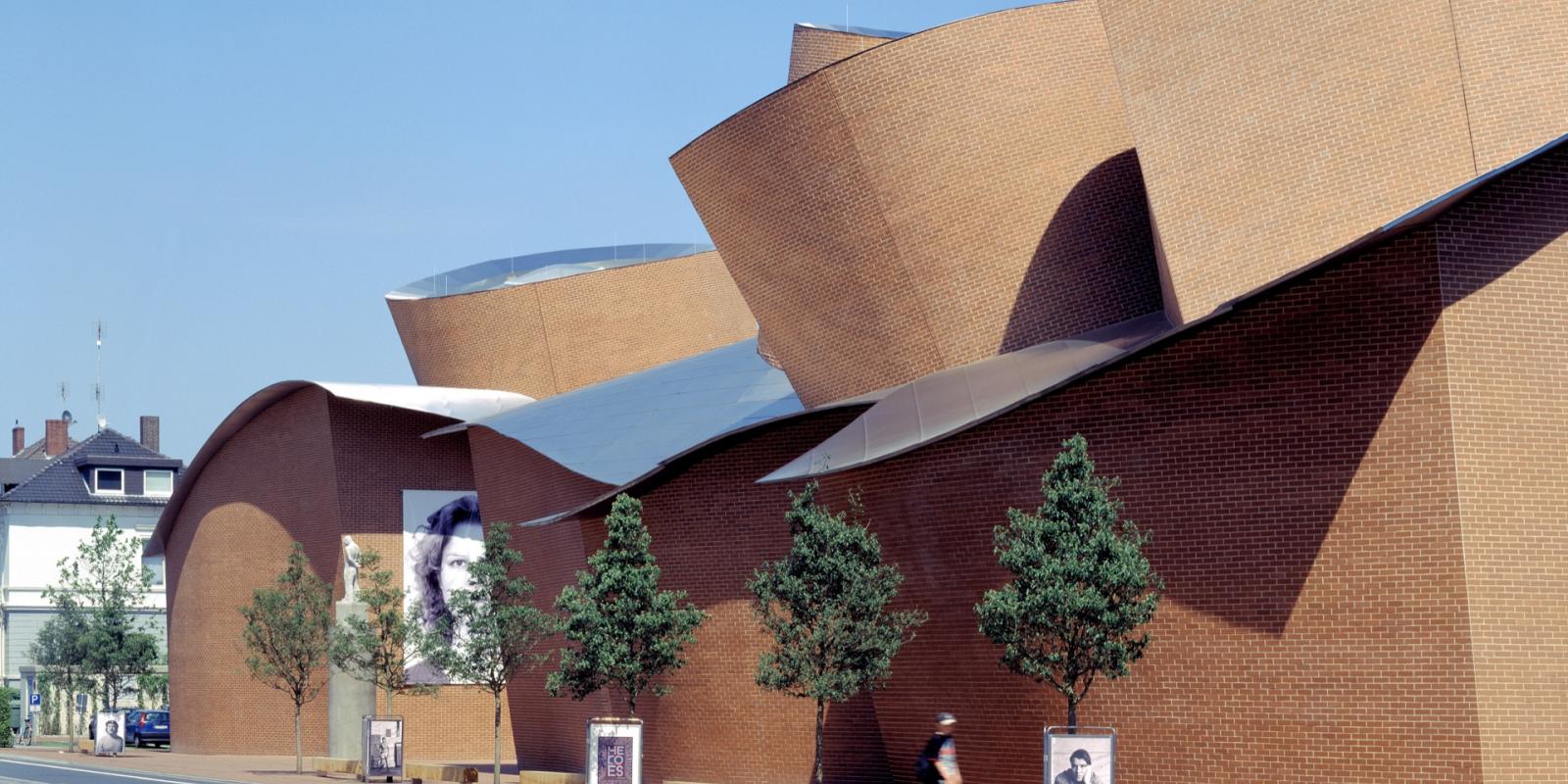
Brick Art
Clinkers are both a building material and a design element. They have a significant impact on the external appearance of a building and characterise the aesthetic perception of single streets, quarters, cities and whole landscapes.
With Brick Expressionism which developed in the 1920s, clinker gained new aesthetic importance. Brick Expressionism had its densest distribution in the Rhine-Ruhr area, developing the character of a regional style. During post-war years the significance of brick facades as a visual element declined, however maintained its relevance as a profitable building material.
Modern architecture shows a clear trend towards clinker bricks. Architects, artists and builders appreciate the different creative possibilities this building material offers and often use it to put their buildings into the spotlight and give their buildings an individual appearance.
Janinhoff Klinkermanufaktur is proud of having been involved in these developments. We are looking forward to continuing to be a trust worthy partner and support to architects and artists in unique ground-breaking projects in the future.
These great projects include for example:
The Nolde Museum in Seebüll
Builder: The Nolde Foundation Seebüll, Ada and Emil Nolde
Architect: Walter Rolfes und Partner, Berlin
From 1927 to 1937 the Expressionist Emil Nolde designed and constructed a residential building in Seebüll near to the Danish border. The self-contained building is reminiscent of Bauhaus architecture of the 1920s and is surrounded by an attractive garden. After the artist's death the building and artwork were opened to the public, known as the Stiftung Seebüll Ada und Emil Nolde (The Nolde Foundation Seebüll).
The Nolde-Forum (museum reception building), the Nolde-Kontor (office and depot) and the Nolde green house were created as part of the "Nolde 2006" project for the 50th anniversary of the artist's death.
The MARTA Museum in Herford
Builder: MKK GmbH (heute: Marta Herford gGmbH)
Architect: Frank Gehry, GP, LLP in co-operation mit Archimedes GmbH and rbb architekten GmbH
Executive Architect: Hartwig Rullkötter, Herford
The museum for contemporary art and design opened on 7 May 2005. The name is an indication of its focus: MARTa, M standing for Möbel/furniture, ART and a for ambience. Designed by the renowned American architect Frank Gehry, the building is classed as one of the most innovative museum complexes in the world. Convex and concave elements made from clinker resemble a huge sculpture.
Referring to these clinkers, the museum's homepage states: "The continuous brick facing of the facades, the reddish-brown colour of which makes reference to the industrial architectural style of the direct surroundings, is typical of the region. Approximately 180,000 clinker bricks cover the curved and inclined exterior walls of over 3,000 square meters’ surface area."
The Gustav Lübcke Museum in Hamm
Commissioned by: City of Hamm -Building Department-
Architects: Jorgen Bo, Vilhelm Wohlert, Copenhagen, Denmark
When Gustav Lübcke left his collection to the city of Hamm in 1917 he helped the city to gain pieces of artwork with national significance. Founded in 1886, the new museum building was inaugurated in 1993 and designed by the Danish architects Jorgen Bo and Vilhelm Wohlert. Today the museum displays collections of Egyptian art, pre- and protohistory, urban history, as well as crafts, 20th century art as well as a children's and young people's museum.
Today, the curved building complex attracts many visitors and with its curved facade and arcade it is an architectural highlight of the city.
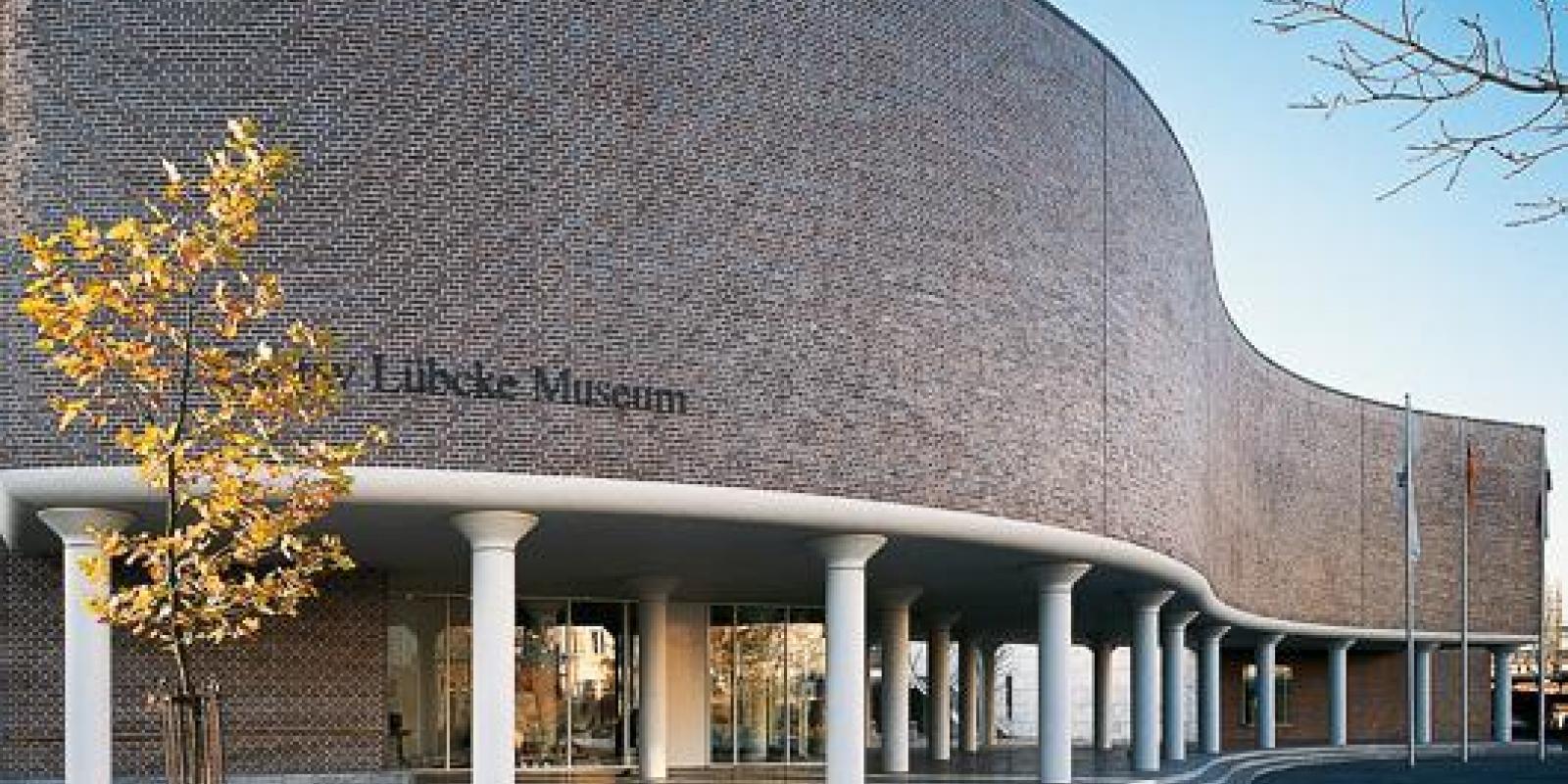
The Per Kirkeby (*1938 in Kopenhagen)
Brick sculptures in Münster and Frankfurt/Main, Germany
"Huset" - the house - is the name of Kirkeby's first brick sculpture created in 1973 on the Jutland peninsula. In the 1980s he created more monumental, monolithic brick sculptures, some of them during the exhibition Skulptur Projekte Münster 1987 (Sculpture projects Münster). Two of them can still be seen in Münster. With his "Brick Sculpture" on the Schlossplatz at the Zoologische Institut, Kirkeby shows examples of different architectural styles and brick applications placing his sculpture in an urban setting characterised by different periods of clinker architecture.
Per Kirkeby has created a memorial for the victims of World War II in the city of Recklinghausen, Germany. The sculpture is 26 metres long and 6 metres high, situated in front of the Lohtor. It is made from more than 26,000 bricks and has 6 large and 7 small arches that rise over a footpath that runs just outside the town centre.
Another project which Kirkeby made from Janinhoff clinkers is the spectacular brick sculpture in front of the Deutsche Bibliothek (German National Library) in Frankfurt/Main, Germany.
